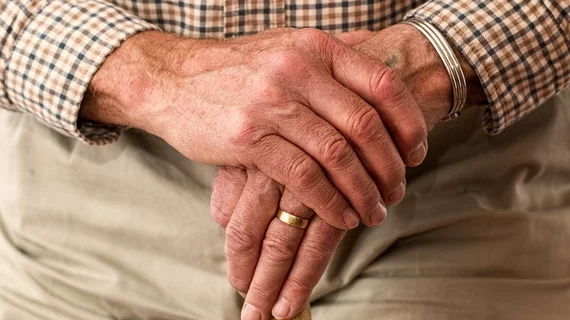A simple test to measure walking speed can indicate frailty and inform survival predictions for older patients undergoing cardiac surgery, suggests a study published in the Journal of the American Heart Association.
Frailty, according to lead author Jonathan Afilalo and colleagues, is “an inability to maintain physiological homeostasis when faced with stressors.” Previous research estimates that it affects between 20 and 60 percent of older adults with cardiovascular disease, with frail patients being less likely or slower to recover from invasive procedures and more likely to experience complications or accumulate high healthcare costs.
And while previous studies have shown an association between slow gait speeds—a simple test of frailty—and 30-day mortality, no large studies had evaluated this possible link out to one year of follow-up.
Afilalo et al. studied 8,287 patients—median age 74; 68 percent male—who were receiving coronary artery bypass graft surgery or surgery on their mitral or aortic valves. All participants were told to walk at a comfortable pace through a finish line five meters away, and their results over three such tests were averaged to determine their gait speed.
After covariate adjustment, each 0.1 meter per second (m/s) decrease in walking speed was associated with a 2.16-fold risk of mortality and a 71 percent increased risk of rehospitalization within one year.
“This is the first large‐scale study to demonstrate an association with mortality at 1 year and beyond,” wrote Afilalo, MD, MSc, with Jewish General Hospital and McGill University in Montreal, and coauthors. “Our landmark survival analysis demonstrated that, in slow walkers, the relative risk of mortality was highest during the time period between 30 days and 1 year following cardiac surgery.”
Patients who walked slower than 0.83 m/s had a 90 percent survival rate at one year, compared to 95 percent in the medium tertile of gait speed (0.83 to 1.0 m/s) and 97 percent in the fastest group. The risk of hospitalization also declined across tertiles of walking speed; slow, medium and fast walkers were readmitted at proportions of 45 percent, 33 percent and 27 percent, respectively.
Recognizing that a patient is frail before surgery could change the clinical management of that patient, the authors pointed out.
“Frail patients with sarcopenia and slow gait speed preceding surgery enter a vicious cycle that contributes to further losses of muscle mass and strength following surgery,” they wrote. “This lack of muscle reserves is exacerbated by the catabolic stress of surgery, leading to deconditioning and disability that can be protracted and lead to repeat hospitalizations, institutionalization, and death. The deconditioning of frail patients is best counteracted by cardiac rehabilitation after, and in selected patients before, surgery.”
The authors said the five-meter walking test is low cost and easy to implement, making it an ideal first-line screening tool for frailty. They added other evaluations could be useful in this cohort as well, including cognitive assessments and tests for hemoglobin and serum albumin.
In addition, cardiologists should focus not just on heart-related recovery after cardiac surgery, but on improvements in patient mobility and energy, which may involve multidisciplinary care with other specialists.
“The 5‐m gait speed test is an efficient screening test to identify frail patients; the use of such a strategy should help target those who may benefit from geriatric assessment, medical optimization, and cardiac rehabilitation,” Afilalo et al. wrote. “Clinical trials are needed to develop effective interventions to improve survival and promote functional recovery in frail older adults undergoing cardiac surgery.”
The researchers acknowledged their data set excluded many patients who were too weak or ill to complete the walking test. Including them in the analysis would have lowered the overall survival rates and likely strengthened the association between gait speed and mortality.

